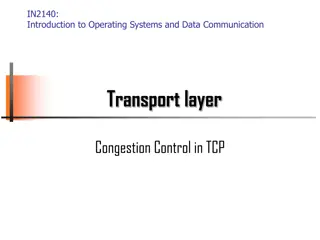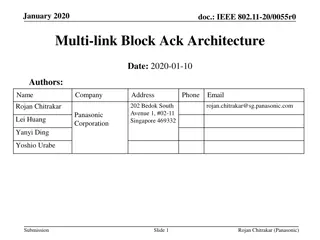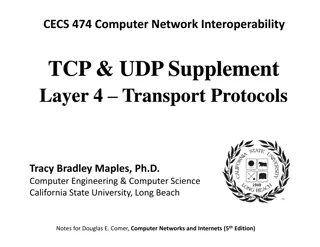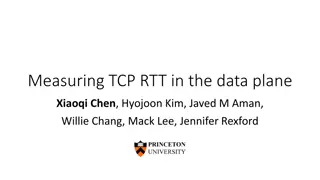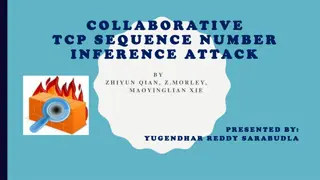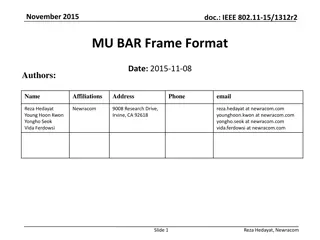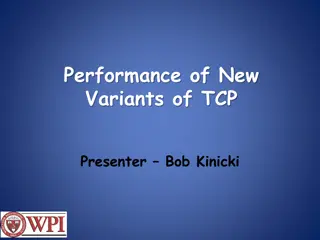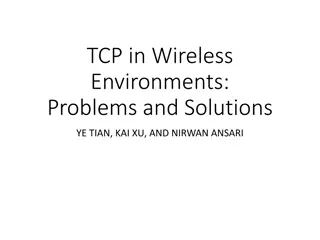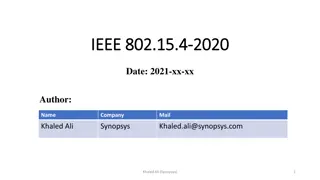
Understanding TCP Acknowledgements and Control Mechanisms
Explore the protocols and mechanisms involved in TCP acknowledgements, flow control, error control, and congestion control. Learn about the significance of sequence numbers and acknowledgments in TCP communication.
Download Presentation

Please find below an Image/Link to download the presentation.
The content on the website is provided AS IS for your information and personal use only. It may not be sold, licensed, or shared on other websites without obtaining consent from the author. If you encounter any issues during the download, it is possible that the publisher has removed the file from their server.
You are allowed to download the files provided on this website for personal or commercial use, subject to the condition that they are used lawfully. All files are the property of their respective owners.
The content on the website is provided AS IS for your information and personal use only. It may not be sold, licensed, or shared on other websites without obtaining consent from the author.
E N D
Presentation Transcript
TCP Part 3: Acknowledgements ECE 461 Professor Jorg Liebeherr 1
Takeaways Takeaways Protocol mechanisms for sending acknowledgments in TCP Cumulative acknowledgements Selective acknowledgments Rules for sending acknowledgments in TCP Delayed ACK Nagle s rule 2
What is flow/congestion/error control ? What is flow/congestion/error control ? Flow control: Prevent that the sender overruns the receiver with information Error control: Recover or conceal the effects from packet losses Congestion control: Prevent that the sender overloads the network The goal of each of the control mechanisms are different In TCP, the implementation of these mechanisms is combined. They all involve the acknowledgement 3
Acknowledgements in TCP Acknowledgements in TCP TCP receivers use acknowledgments (ACKs) to confirm the receipt of data to the sender Acknowledgment can be added ( piggybacked ) to a data segment that carries data in the opposite direction ACK information is included in the TCP header ACKs play a role in flow control, error control, and congestion control Data for B B Data for A ACK A ACK 4
Sequence numbers and acknowledgments in TCP Sequence numbers and acknowledgments in TCP TCP uses sequence numbers to keep track of transmitted and acknowledged data Each transmitted byte of payload data is associated with a sequence number Sequence numbers count bytes and not segments Sequence number of first byte in payload is written in SeqNo field Sequence numbers wrap when they reach 232-1 Source port Destination port Sequence number (SeqNo) Acknowledgement number (AckNo) header length Flags Window size 0 TCP checksum Urgent pointer The sequence number of the first sequence number (Initial sequence number or ISN) is negotiated during connection setup 5
Sequence numbers and acknowledgments in TCP Sequence numbers and acknowledgments in TCP An acknowledgment is a confirmation of data delivery When a TCP receiver wants to acknowledge data, it writes a sequence number in the AckNo field, and sets the ACK flag Source port Destination port Sequence number (SeqNo) Acknowledgement number (AckNo) header length Flags Window size 0 TCP checksum Urgent pointer An acknowledgment confirms receipt for all unacknowledged data that has a smaller sequence number than given in the AckNo field Example: AckNo=5 confirms delivery for 1,2,3,4 (but not 5) 6
Cumulative acknowledgements Cumulative acknowledgements TCP has cumulative acknowledgements: An acknowledgment confirms the receipt of all unacknowledged data with a smaller sequence number Sender Receiver 7
Cumulative acknowledgements: lost segment Cumulative acknowledgements: lost segment With cumulative ACKs, the receiver can only acknowledge a segment if all previous segments have been received Timeout Sender Receiver 8
Cumulative Acknowledgements: lost segment Cumulative Acknowledgements: lost segment What happens in the example? 2nd segment is lost When later segments arrive, receiver continues to acknowledge 1st segment (ACK 10) When timeout occurs for 2nd segment, sender retransmits starting at 2nd segment When 2nd segment arrives at receiver, receiver can acknowledge all data that has been received so far (ACK 60) The use of cumulative ACKs imposes a constraints on the retransmission scheme: In case of an error, the sender may need to retransmit all data that has not yet been acknowledged 9
Selective acknowledgment (SACK) Selective acknowledgment (SACK) With selective acknowledgments, the receiver can acknowledge non- contiguous blocks of data SACK is used when an ACK is sent and the AckNo does not reflect the highest sequence number in the data receiver's queue New data has been received after a lost or reordered segment Acknowledge blocks (ranges) of sequence numbers that have been received Up to four blocks can be acknowledged at once: For each block, provide the lowest sequence number (left edge) and the highest sequence number (right edge) 10
Selective acknowledgements: lost segment Selective acknowledgements: lost segment With selective ACKs, the receiver can acknowledge ranges of sequence numbers Timeout Sender Receiver 11




